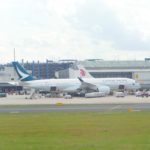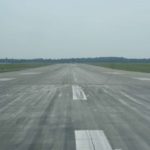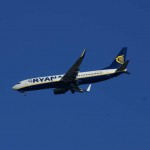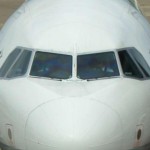Boeing [NYSE:BA] forecasts a $2.6 trillion market for new commercial airplanes over the next 20 years.
LONDON – Strong market demand for new airplanes will lead to a world fleet with significantly improved environmental performance.
These new airplanes will accommodate a forecasted 4.9 percent annual increase in passenger traffic, and a 6.1 percent annual increase in air cargo traffic.
The Boeing Company released its 2006 Current Market Outlook today in London. The report, here
, is Boeing’s world outlook for the future of commercial jet airplanes.
Boeing projects a need for approximately 27,200 new commercial airplanes (passenger and freighter), doubling the world fleet by 2025. The vast majority of these new airplanes will be in the single-aisle (100-240 seats) and twin-aisle (200-400 seats) categories.
„We’re forecasting a continued strong long-term demand for new airplanes over the next 20 years,“ said Boeing Commercial Airplanes Vice President of Marketing Randy Baseler. „These airplanes will take people and products where they need to travel, as never before. Improved fuel efficiency and increased range will allow airlines to take more travelers directly where they want to go, when they want to go. New, much quieter airplanes with significantly reduced emissions will permanently change the character of the world airplane fleet.“
On a delivery-dollar basis, the largest market is projected to be the Asia-Pacific region, with 36 percent of the $2.6 trillion total — a result of the demand among Asian carriers in that market for more twin-aisle airplanes. North America will make up 28 percent of the delivery dollars and Europe will make up 24 percent. Deliveries to airlines in Latin America, the Middle East and Africa will represent a total of 12 percent of the delivery dollars between 2006 and 2025.
Over the next 20 years, airlines will take delivery of approximately:
- 3,450 regional jets — 90 seats and below
- 16,540 single-aisle airplanes — 100-240 seats, dual class
- 6,230 twin-aisle airplanes — 200-400 seats, tri-class
- 990 airplanes 747-size or larger — more than 400 seats, tri-class
Combined with the retained fleet, these new deliveries will result in a world commercial airplanes fleet of nearly 36,000 airplanes by 2025.
„The single-aisle and twin-aisle categories make up about 86 percent of the market value in our forecast,“ Baseler said. „In the long-haul transoceanic and Asia-Europe markets, twin-aisle airplanes will dominate the world fleet, providing more frequencies and increased nonstop service. The 747-and-larger aircraft that typically would operate in the Asia-related markets and the North Atlantic will continue to do so. In terms of numbers of airplanes delivered, single-aisles will make up the majority, and will help airlines offer more frequencies and increased nonstop service on domestic and short-haul international flights.“
The Current Market Outlook projects that single-aisle and twin-aisle airplanes in the 100 to 400-seat categories will account for almost all of the growth in air travel over the next 20 years. The Boeing product strategy centers on this growth market, offering a family of airplanes that allows customers to maximize their efficiency, increase profitability, and provide the nonstop, point-to-point flights and frequency choices passengers want.





